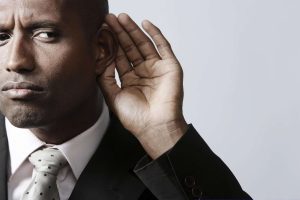According to a study, a whopping ninety-three percent of communication is nonverbal. More than half of that percentage is composed of body language, while the rest falls on the tone of your voice. That is why positive body language is so important.
Positive body language, per se, is not necessarily the best type of body language. You cannot convey negative emotions like frustration, anger, or sadness using it.
What are some examples of negative body language?
Negative body language (otherwise known as defensive body language) is not necessarily bad. In fact, they may amplify your message so that you can effectively convey unhappy or displeased emotions. If you are in an uncomfortable situation or are with a group of strangers, you might display the following behaviors:
- Crossing your arms. When you do this, you are somehow hugging yourself, providing a sense of security and comfort in an unpleasant situation.
- Clenching your fists.
- Holding an object in front of your body-hugging your notepad, bag, or anything.
- Fidgeting with your hands or correcting your cuffs.
- Looking at your watch.
- Looking down, with the neck hidden.
- Doodling, looking away, not making eye contact
As you may notice, almost all of the body language examples mentioned seem to protect the person by shielding them with the use of objects or other body parts such as the arms and hands. They also let the person avoid the danger or uncomfortable situation with escaping behaviors such as looking away or avoiding eye contact.
Unfortunately, even if these behaviors are comforting and protective, it does not make other people like you. You will often appear as aloof, cold, insensitive, or displeased. If you don’t want to send other people that message, you need to consciously revert to positive body language.
How to display positive body language
If you are trying to convey an open and friendly demeanor, positive body language is the way to go. It is the best way to get other people to like you because it makes others perceive you as open, amicable, and sincere. It can ultimately help you build good working relationships, become more persuasive, advance in your career, and succeed in life.
Learn how to use body language for better communication through the Body Language: Communicate More Effectively online course from Skill Success.
Here are a few examples of positive body language that you can apply to your daily life.
Have an open stance
As much as you can, avoid crossing your arms—reserve that for when you are in an interrogation, or you are in danger. If you’re simply talking to your boss or answering an interview question, crossing anything in front of you will put your listener off.
Adopt an open stance. Keep your arms relaxed at your sides and keep your palms open. If you think about it, it does not seem like much, but lots of people find it hard not to cross their arms or clutch their fists when they are nervous.
Mindfully opening up your body in such a way makes you more approachable and likable for anyone who is looking at you. If you look at pictures of great speakers, you’ll find most of them with their arms and palms wide open.
Maintain regular eye contact
Another no-brainer in positive body language is eye contact. It comes naturally if you don’t think too much about it. However, in highly tense situations such as important interviews where you are meeting several important people for the first time, it may be the most difficult thing in the world.
However, maintaining regular eye contact is essential to give off positive vibes to your listener. It shows that you acknowledge them because you see them. It makes them feel that you are not just listening to what they are saying, but also looking at their nonverbal cues.
If you feel too awkward looking a new acquaintance in the eye, one trick to get through it is by gazing at the bridge of their nose every once in a while.
Lean forward
While leaning back means that you are relaxed and literally “laid-back,” it could also signal that you are avoiding the other person as they speak to you, or that you are disinterested or tired of listening to them.
Something as simple as leaning forward can have massive effects on showing someone that you are all ears. It gives off an impression of eagerness and willingness to listen. There is a thing called Reciprocal Liking, where we tend to easily like people who like us.
Try to think of how your pet dog makes you feel when he eagerly greets you as you come home. We naturally like those who are enthusiastic about us because it makes us feel important.
Keep an upright posture.
Slouching down or even sideways, looks awkward in any situation. It makes other people feel that there is something wrong with you. People who have a markedly slouched posture are usually depressed or in pain.
If you adopt a slouched posture during a meeting, your boss might get distracted or think that you are unwell. In an interview, this may give off the impression that you have poor self-confidence.
Be responsive
Nodding, changing your facial expressions, and laughing when someone makes a funny remark are a few examples of being responsive during a conversation. It shows that you are actively listening to what they are saying.
It’s easy to be responsive. You don’t necessarily have to say something back. Simply listening and reacting with your facial expressions is sometimes enough.
Mirror the other person’s gestures
Another positive body language trick you can apply to make other people like you better is by mirroring the other person. If you’re having coffee together, take a sip when they do. Try to copy the way that they are sitting or standing, as well as their facial expressions.
Don’t overdo it, though. A few mirrored gestures throughout the whole conversation is already enough. If the other person senses that you are deliberately copying them, this can have the opposite effect on your relationship.



